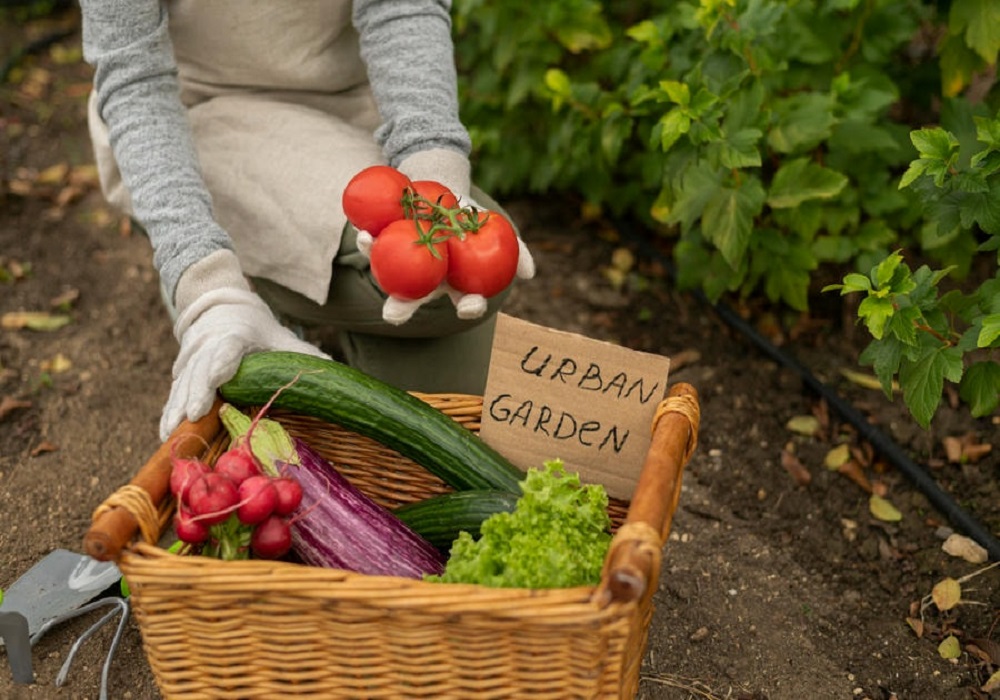Growing a vegetable garden is a rewarding experience, but it can be challenging if you have limited space. Fortunately, vertical gardening offers an excellent solution by maximizing your garden space and allowing you to grow a wide variety of vegetable garden plants. This method not only saves space but also helps reduce pests, increase air circulation, and make harvesting easier. In this article, we’ll explore innovative ways to grow vegetable garden plants vertically, helping you make the most of your garden.
Benefits of Vertical Gardening
Space Efficiency
One of the primary advantages of vertical gardening is space efficiency. By growing plants upward, you can utilize small spaces such as balconies, patios, or small garden beds more effectively. This is particularly beneficial for urban gardeners with limited ground space.
Improved Air Circulation
By increasing air circulation around the plants, vertical gardening lowers the chance of pests and fungus-related illnesses. Improved airflow helps keep the foliage dry and healthy, promoting better growth and productivity.
Easier Harvesting and Maintenance
Vertical gardens make it easier to access your plants for pruning, watering, and harvesting. No more bending over or crawling on the ground – simply reach up to care for your plants. This ease of access can make gardening more enjoyable and less physically demanding.
Aesthetic Appeal
A vertical garden can be a beautiful addition to your home or garden. It creates a lush, green wall that can serve as a stunning visual feature while also providing fresh produce.
Choosing the Right Vegetable Garden Plants
Not all vegetable garden plants are suitable for vertical gardening. Here are some of the best options that thrive in a vertical setup:
- Tomatoes: Varieties like cherry tomatoes and indeterminate types are perfect for vertical gardening. Use a sturdy trellis or cage to support the vines.
- Cucumbers: These creeping plants are capable of climbing vertical frames or trellises. Choose bush varieties for smaller spaces or traditional vining types for larger setups.
- Peas: Both sugar snap and snow peas are excellent choices. They climb naturally and can be supported with netting or trellises.
- Beans: Pole beans are ideal for vertical gardens. They grow quickly and can be trained to climb up poles or strings.
- Squash: Smaller varieties of squash, like zucchini, can be grown vertically with proper support.
- Peppers: While not climbers, peppers can benefit from vertical space by being grown in tiered planters or shelves.
- Herbs: Many herbs, such as basil, parsley, and mint, can be grown in vertical pockets or hanging planters.
Innovative Vertical Gardening Techniques
1. Trellises and Arbors
Using trellises and arbors is a classic method for growing climbing vegetable garden plants. These structures provide strong support for vines and can be made from wood, metal, or plastic. Place them along the edges of your garden beds or as standalone features.
2. Vertical Planters and Wall Gardens
Vertical planters come in various designs, from pocket planters to stackable pots. Wall gardens can be created using modular systems or DIY solutions with repurposed materials. These setups are ideal for growing herbs, lettuce, and other compact plants.
3. A-Frame Trellises
A-frame trellises are easy to construct and provide excellent support for climbing plants like beans and cucumbers. They can be made from bamboo poles, wooden slats, or metal rods. The A-frame shape allows for two-sided planting, doubling your growing space.
4. Hanging Gardens
Hanging gardens are perfect for small spaces and patios. Use hanging baskets or repurpose items like shoe organizers or gutters to create a vertical garden. This method works well for trailing plants like strawberries, tomatoes, and herbs.
5. Pallet Gardens
Wooden pallets can be transformed into vertical gardens by adding a backing material and filling the spaces with soil. Pallet gardens are great for growing leafy greens, herbs, and flowers. Ensure the pallet wood is untreated to avoid chemicals leaching into the soil.
Tips for Successful Vertical Gardening
1. Choose the Right Plants
Select vegetable garden plants for your home garden that are well-suited for vertical growth. Vining plants and those with compact growth habits are ideal choices.
2. Provide Adequate Support
Ensure your vertical structures are sturdy and can support the weight of your plants. Use strong materials and secure them properly to avoid collapses.
3. Optimize Sunlight
Choose a spot for your vertical garden that gets enough sunshine. Most vegetable garden plants require at least 6-8 hours of direct sunlight per day.
4. Regular Maintenance
Regularly check your vertical garden for pests, diseases, and plant health. When necessary, train and prune plants to promote upward growth and better air circulation.
5. Efficient Watering
Compared to ordinary gardens, vertical gardens may dry out more quickly. Use drip irrigation systems or self-watering containers to ensure consistent moisture levels.
6. Quality Soil and Fertilizer
Use high-quality potting soil and organic fertilizers to provide essential nutrients. Regular feeding will help your plants thrive in a vertical setup.
Conclusion
A clever and creative approach to make the most of your gardening space and cultivate a wide range of vegetable garden plants is through vertical gardening. By choosing the right plants and using effective vertical gardening techniques, you can create a productive and visually appealing garden even in the smallest of spaces. Whether you’re a novice or an experienced gardener, vertical gardening offers a unique and efficient approach to growing your own fresh produce. So, get creative, build your vertical garden, and enjoy the benefits of homegrown vegetables all year round.






